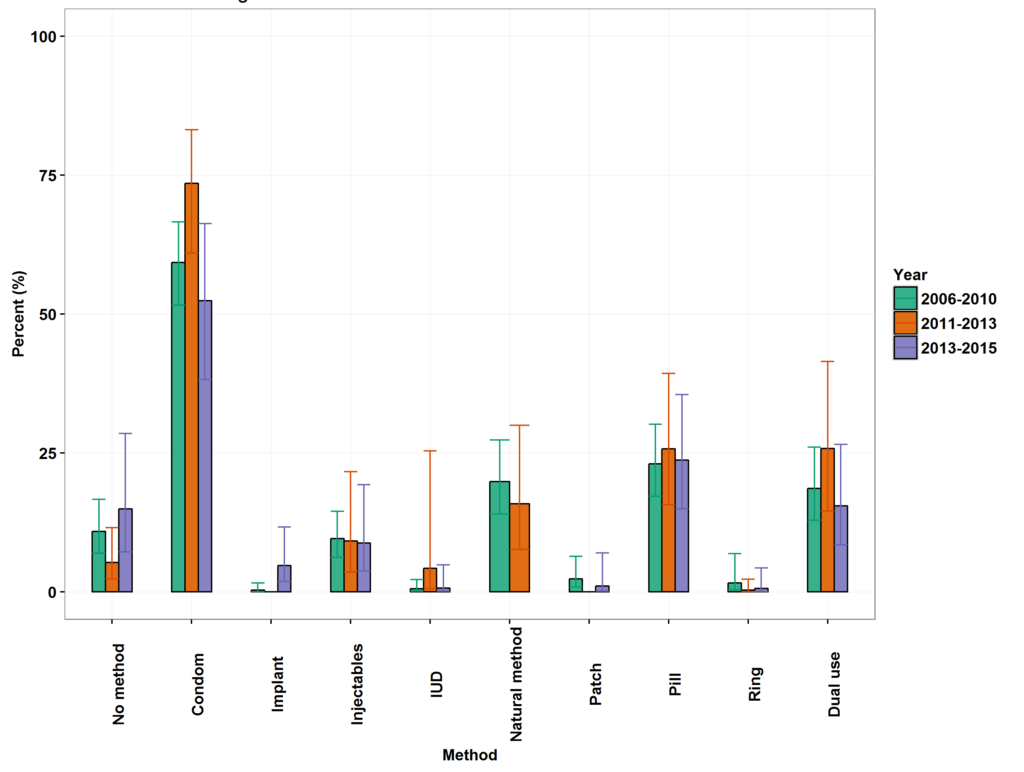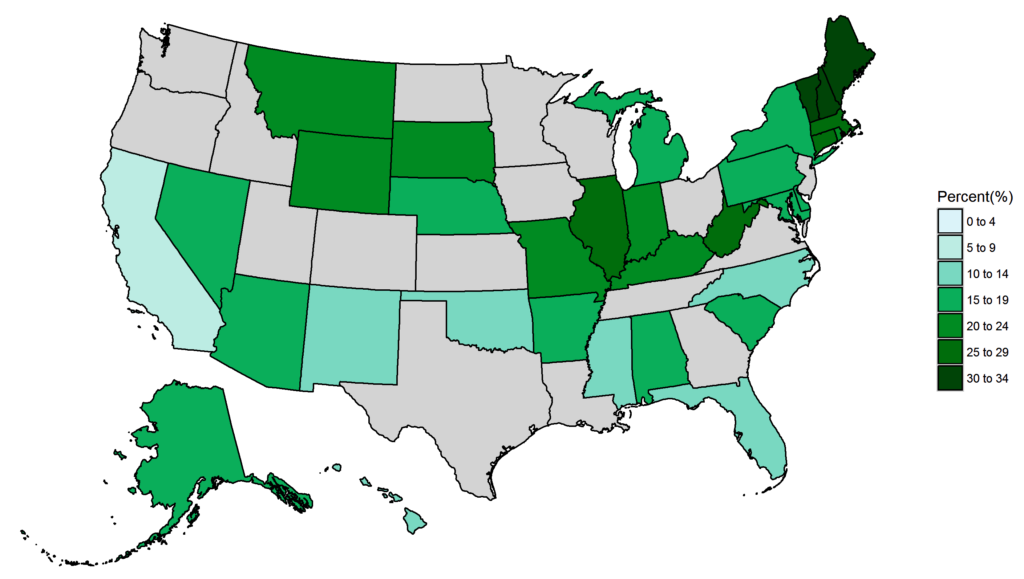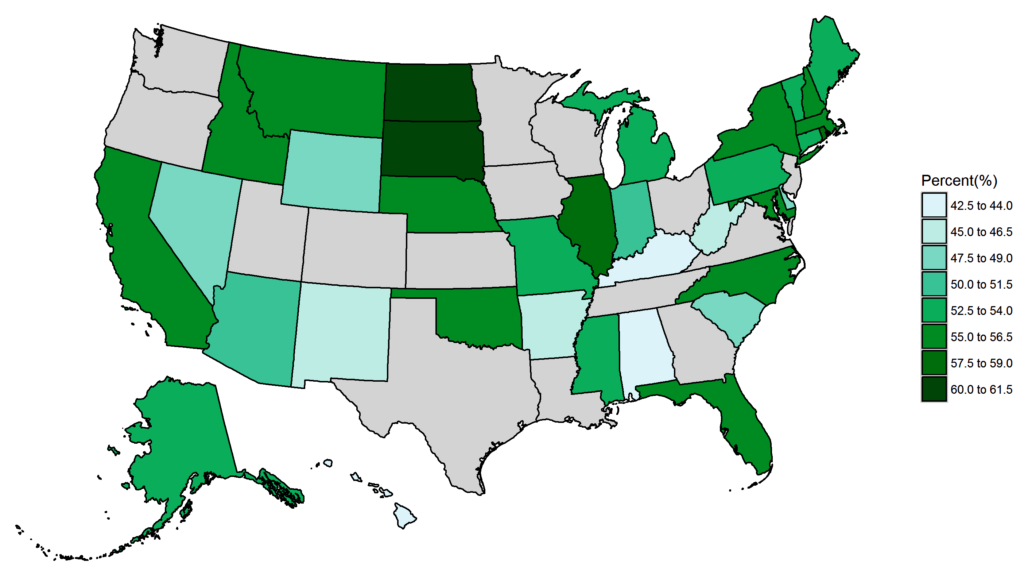Young People
Subcommittee
The Working Group aims to make over-the-counter (OTC) access to oral contraceptives (OCs) available to all individuals, regardless of age. To help achieve this goal, the Working Group created the Young People Subcommittee to ensure that young people’s priorities and perspectives are incorporated into the Working Group’s efforts to make a birth control pill available OTC. The subcommittee is led by two co-chairs, Melissa Kottke and Tracey Wilkinson, and is currently comprised of 23 members from a diverse range of professions, including clinicians, university-based researchers, and individuals conducting research or advocacy work at reproductive health, rights, and justice organizations.
On this webpage, you can find information about:
The Subcommittee’s Definition of a Young Person
Sexual & Reproductive Rights of Young People
The Use of Contraceptives by Young People in the United States
Evidence Supporting an OTC Birth Control Pill Without an Age Restriction
Current Projects & Activities of the Subcommittee
Additional Information & Opportunities for Involvement
News Articles & Opinion Pieces on Young People and OCs OTC
Resources
References
The Subcommittee’s Definition of a Young Person
The terms “adolescents” and “youth” are often used interchangeably, and there is no globally agreed upon definitions for these terms. The United Nations defines “youth” as a young person between the ages of 15-24, and acknowledges that the meaning of this word varies across nations [1]. The OCs OTC Young People Subcommittee defines young people as individuals of reproductive age up to the age of 30.
The Sexual and Reproductive Rights of Young People
Young people have a right to make decisions about their own sexual and reproductive health, including when to begin using contraception and choosing a contraceptive method that works best for them [2]. Unfortunately, numerous legal, social, and economic barriers prevent young people from accessing a wide range of information, services, facilities, and products needed to make free and informed choices about their reproductive health. One of these barriers is the requirement to obtain a prescription for a birth control pill, which may be especially difficult for young people due to cost, the inability to access transportation, and embarrassment due to stigma against young people who are sexually active. Making an affordable birth control pill available over-the-counter will allow young people to easily access this safe and effective method of contraception.
What Types of Contraceptive Methods Do Young People Use in the United States?
Types of Contraceptive Methods Used
Use of contraception at last sex in the prior 3 months among females 15-17 years of age among women who had intercourse within 3 months of interview (2015)

Use of contraception at last sex in the prior 3 months among females 18-29 years of age among women who had intercourse within 3 months of interview (2015)

The two bar graphs above present nationally representative data from the National Survey of Family Growth (NSFG). Of 15-17 year olds, 18.2% (n=1,304), 17.1% (n=591), and 16.3% (n=613) of females reported having sex in the last three months in 2006-2010, 2011-2013, and 2013-2015 respectively. Among 18-29 year olds, 71.7% (5,444), 71.2% (n=2,476), and 70.6% (n=2,397) of females reported having sex in the last three months in 2006-2010, 2011-2013, and 2013-2015 respectively. Dual use represents use of a condom and one of the following methods: implant, injectable, IUD, pill, patch, or ring. Use of each individual method reflects use of that method regardless of whether it was used alone or in combination with another method, with the exception of the Dual use category. The mean estimates and the associated 95% confidence intervals (shown with error bars) presented here take into account the survey design used in each round of the NSFG.
Use of Birth Control Pills and Condoms Among High School Students
Birth control pill use before last sexual intercourse among female high school students who are sexually active (2015)

Condom use before last sexual intercourse among female high school students who are sexually active (2015)

The two maps above display statistics reported from The Youth Risk Behavior Survey, 2015. Birth control pill use and condom use is measured among females who were currently sexually active. Grey represents states with no data. Find the full report of findings here.
Evidence Supporting an OTC Birth Control Pill Without an Age Restriction
Research has demonstrated that oral contraceptives are effective and safe, and that there is no scientific basis for imposing an age restriction on an OTC birth control product [3]. Data have shown that:
• Women under the age of 18, like adult women, can successfully determine whether they can safely use oral contraceptives [3]
• Women under 18 are no more likely than women aged 18-24 to miss or skip pills during the first two years of use [3]
• Increasing access to contraception does not result in an increase in sexual risk behaviors among young people [3]
Current Projects & Activities of the Subcommittee
Dual Protection with OTC Contraception Project
Subcommittee co-chairs, Melissa Kottke and Tracey Wilkinson, are working to understand young people’s attitudes about dual protection with OCs OTC and to design an effective communication strategy supporting dual protection. The specific aims of the project are to:
(1) Use human-centered design techniques to qualitatively explore dual protection in the
context of OCs OTC by engaging a diverse young person stakeholder group in the use of
a novel self-guided toolkit.
(2) Create a potential communication strategy and several artifact prototypes supporting
dual protection in the context of OCs OTC.
Connecting with Adolescent Organizations
Members of the subcommittee are currently reaching out to youth-focused medical societies and organizations to provide more information about Working Group efforts and a growing number of these organizations have expressed their support for young people’s access to OCs OTC by signing the Working Group’s Statement of Purpose. The American Academy of Family Physicians (AAFP) has also published a resolution urging that all adolescents be included in OCs OTC studies required by the FDA.
Interested in Learning More or Becoming Involved?
• Learn more about efforts to make a birth control pill available OTC at Freethepill.org.
• Stay updated on the work by following the Free the Pill project on Twitter and Facebook.
• If your organization is interested in signing the Working Group’s Statement of Purpose, or becoming involved in the Young People Subcommittee, please contact Carmela Zuniga at czuniga@ibisreproductivehealth.org.
News Articles & Op-eds
2017
• Hersher, R. Over-the-counter birth control pills would be safe for teens, researchers say. NPR. 16 March 2017.
2016
• Farewell A. Birth control should be available over the counter. The Daily Nebraskan 18 April 2016
• Almendrala A. What you need to know about ‘over-the-counter’ birth control pills. The Huffington Post. 8 January 2016.
2015
• Grossman D. Op-Ed: Birth control pills should not be prescription-only. Los Angeles Times. 19 June 2015.
• Akoukou Thompson N. Birth control is essential to a woman’s economic security, yet barriers persist for non-white, low income women. Latin Post. 6 January 2015.
2014
• Sonfield A and Barot S. Birth control pills should be available over the counter, but that’s no substitute for contraceptive coverage. Health Affairs. 10 September 2014.
2013
• Gonchar M. Should birth control pills be available to teenage girls with a prescription? The New York Times. 3 May 2013.
Resources
Overview of Adolescent Sexual and Reproductive Health
• Bearinger L, Sieving R, Ferguson J, Sharma V. Global perspectives on the sexual and reproductive health of adolescents: patterns, prevention, and potential. Lancet 2007; 369:1220-31.
Studies on Attitudes and Opinions of OCs OTC
• Forman SF, Emans SJ, Kelly L, Beal J, Goodman E. Attitudes of female college students toward over-the-counter availability of oral contraceptives. J Pediatr Adolesc Gynecol. 1997;10:203-7.
• Grindlay K, Grossman D. Women’s perspectives on age restrictions for over-the-counter access to oral contraceptives. J Adolescent Health. 2015;56(1):38-43.
• Manski R, Kottke M. A survey of teenagers’ attitudes toward moving oral contraceptives over the counter. Perspect Sex Reprod Health. 2015; 47(3).
Why Young People Need OCs OTC
• Upadhya K, Santelli J, Raine-Bennet T, Kottke M, Grossman D. Over-the-counter access to oral contraceptives for adolescents. Journal of Adolescent Health. 2017;60(6):634-640.
Health Impact of OCs on Young People
• Warholm L, Petersen KR, Ravn P. Combined oral contraceptives’ influence on weight, body composition, height, and bone mineral density in girls younger than 18 years: a systematic review. Eur J Contracept Reprod Health Care. 2012;17(4):245-53.
Lessons from Moving Emergency Contraception OTC
• Rafie S, McIntosh J, Gardner DK, Gawronski KM, Karaoui LR, Koepf ER, Lehman KJ, McBane S, Patel-Shori NM. Over-the-counter access to emergency contraception without age restriction: An opinion of the women’s health practice and research network of the American College of Clinical Pharmacy. Pharmacotherapy. 2013;33(5):549-57.
• Krishnamurti T, Eggers SL, Fischhoff B. The impact of over-the-counter availability of “Plan B” on teens’ contraceptive decision making. Soc Sci Med. 2008 Aug;67(4):618-27.
• Wilkinson TA, Fahey N, Shields C, Suther E, Cabral HJ, Silverstein M. Pharmacy communication to adolescents and their physicians regarding access to emergency contraception. Pediatrics. 2012;129(4).
References
[1] United Nations Department of Economic and Social Affairs (UNDESA). Definition of Youth. 2013. Available at https://social.un.org/youthyear/docs/UNPY-presentation.pdf.
[2] Committee on Economic, Social and Cultural Rights. General Comment No. 22 (2016) on the Right to sexual and reproductive health (article 12 of the International Covenant on Economic, Social and Cultural Rights). Available at https://www.escr-net.org/resources/general-comment-no-22-2016-right-sexual-and-reproductive-health.
[3] Upadhya K, Santelli J, Raine-Bennet T, Kottke M, Grossman D. Over-the-counter access to oral contraceptives for adolescents. Journal of Adolescent Health. 2017;60(6):634-640. Available at http://www.jahonline.org/article/S1054-139X(17)30023-X/pdf.

